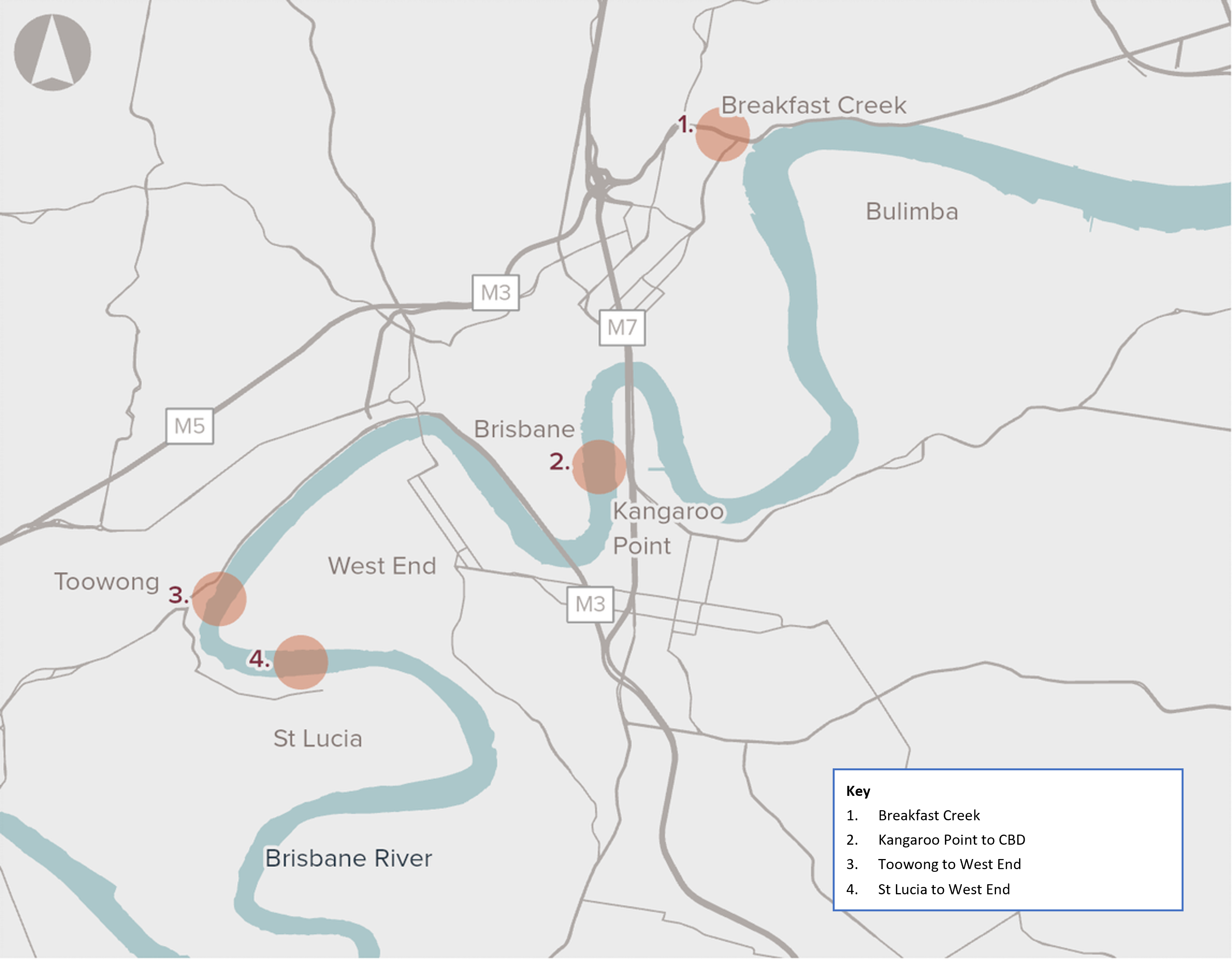Active transport connections across the Brisbane River


Brisbane experiences high traffic congestion which is expected to worsen. Within the inner-city, current and forecast employment and housing growth are expected to exacerbate this issue as a high proportion of short trips are by private vehicle. This is partly due to the Brisbane River being a physical barrier to journeys between strategic centres, including the Brisbane CBD.
The provision of new active transport connections across the Brisbane River presents an opportunity to ease network congestion.
Over the last 20 years, there has been a 60% increase in kilometres driven by private vehicles in Brisbane. This increase is largely attributed to the dispersed growth of strategic centres across the meandering geography of the Brisbane River. Over half of all private vehicle trips are shorter than 5km, suggesting active transport could replace a portion of these trips.
Brisbane City Council is proposing a program of 4 ‘Green Bridges’, one over Breakfast Creek, and three over the Brisbane River connecting Kangaroo Point to the CBD, Toowong to West End, and St Lucia to West End.
Strategic Fit
Walking and cycling are a strategic priority for all levels of Government, particularly in urban areas, where they can have the largest impact on reducing congestion and improving air quality, health outcomes and safety. The 2021 Australian Infrastructure Plan identifies active transport as a major priority.
Societal Impact
New active transport connections can support economic and recreational opportunities alongside and across the Brisbane River, with a number of benefits including amenity, health outcomes and emissions reduction.
Deliverability
Brisbane City Council is responsible for the planning and delivery of active transport connections, in collaboration with the Queensland Department of Transport and Main Roads. Achieving a mode shift from private vehicle to active transport of 5.5% is critical for achieving benefits to congestion. This level of mode shift is possible considering Brisbane’s growth trajectory within the 5km radius of the city centre. Non-infrastructure and low capital
investment, as well as adequate and safe active transport paths to access the river crossings will be critical to encouraging the envisaged active transport take-up.
Proponent to identify and analyse potential investment options (Stage 2 of Infrastructure Australia’s Assessment Framework).
A Stage 2 submission should analyse low capital investment and non-infrastructure options that are complements and/or alternatives to new cross-river connections to maximise the benefits of active transport investment. This might include road space re-allocation, congestion charging, parking policies, and lower speed limits.
Refer to Infrastructure Glossary for terms and definitions.